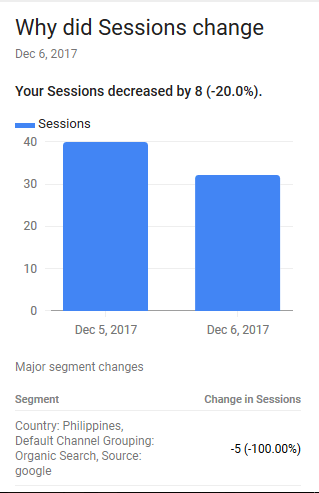It’s always a pleasure to use a product that keeps evolving. The possibility of discovering a new feature that’s been recently launched, and the happiness of seeing the applications of that new feature is what keeps me coming back to the product. Google Analytics is one such product for me. Slowly and steadily, they have evolved the product so as to give the free tier users a taste of what Google Analytics Premium (GAP) offers.
Intelligence reports have been around for quite some time now. However, what GA has done in the recent times, is give the user the ability to articulate their question in natural language, and use natural language parsing to understand the question and present meaningful answers back to the user.
Smart and Intelligent reports
Here’s an example of how these intelligent reports work. Suppose, I see a spike in traffic yesterday, and I want to know the reason why.
Normally, I would go to the Source/Medium report in the Acquisition section and see which of the sources have had an increase in traffic since yesterday. However, what intelligent reports does is this –

So what’s the big deal?
The big deal is this. If you are not comfortable with the analytics interface or are not savvy with using the right set of reports for fetching your data, then the intelligent reports are a rather user friendly way for getting access to perhaps the right data.
Notice, in my example, the segments that intelligent reports ended up reporting was a rather advanced segment (Organic traffic, Country-wise).
To reach there, I’d have to go through atleast two separate iterations. This was given to me rather quickly.
Cool, are there any disadvantages?
There is one huge disadvantage. The data given is prescriptive in nature.
You are relying on Google Analytics to give you the right data.
While, for most use cases, the data may not be that important, but for someone whose living runs on getting the right numbers, this may not be enough. It’s good enough to get you started in the right direction though.
Why do I still like it?
The nature of querying is also pretty great. Now, business teams can directly dive into Google Analytics instead of having to wait for an agency or an analyst to make sense of this data. That’s power to the people!
This means, a lot more people can now engage with analytics and take the right data driven steps for improvement.